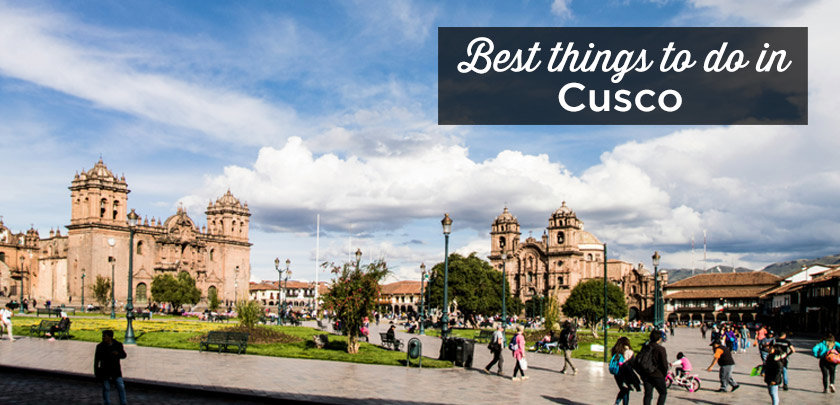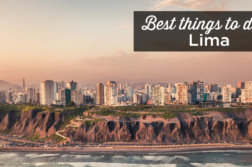The 25 Best Things to Do and See in Cusco (Peru)
Visiting Cusco means stepping into what was once the capital of the powerful Inca Empire – a city that, at its peak, was considered the most important in South America.
Today, Cusco is one of Peru’s most captivating destinations and a key stop on any itinerary. It’s not only full of charm and history, but it’s also the main gateway to the Sacred Valley and the legendary Machu Picchu.
To help you prepare for your trip, I’ve created this complete guide to Cusco featuring 30 must-see places and things to do, along with my top tips to make your visit as smooth and memorable as possible.
You’ll also find suggested itineraries from 1 to 4 days depending on how long you’re staying, plus my hotel recommendations for every budget, from backpacker hostels to charming boutique stays.
What to do in Cusco? Where to stay?
Let’s find out!
Sommaire
- The 25 Best Things to Do and See in Cusco (Peru)
- Before Visiting Cusco
- Cusco Guide: 30 Places to Visit
- 1. The Main Square
- 2. The Basilica of La Merced
- 3. The 12 Angled Stone
- 4. The Coricancha and the convent of Santo Domingo
- 5. The Neighborhood of San Blas
- 6. The market of San Pedro
- 7. The Inca Ruins Around Cusco
- 8. Climb Up to the White Christ Viewpoint
- 9. The Machu Picchu Museum
- 10. Learn More About the Coca Leaf
- 11. The museums of Cusco
- 12. Discover the art of Cusco
- 13. Make Your Own Chocolate
- 14. Take the Tourist Bus in Cusco
- 15. The Center for Traditional Textiles of Cusco
- 16. Preparing a good pisco sour
- 17. Take a free salsa class
- 18. Stargazing in the Southern Hemisphere
- Around Cusco
- 19. Exploring the Sacred Valley
- 20. Exploring the south of the valley
- 21. The Iconic Machu Picchu
- 22. The Rainbow Mountain
- 23. Palccoyo Mountain
- 24. The Humantay Lagoon
- 25. The Perolniyoc waterfall
- 26. Hike to Waqrapukara
- 27. Reaching the Sun Gate
- 28. The Queshuachaca Bridge
- 29. Experiential tourism
- 30. The other activities
- Where to Stay in Cusco
- How to get to Cusco?
- How to get from Cusco airport to the hotel?
- How much time to visit Cusco?
- When to Visit Cusco?
- Can You Visit Cusco in February?
- What to Pack for Cusco
- How to Avoid Altitude Sickness in Cusco
- Rent a Car in Peru
- Traveling to Peru? These articles will help you!
Before Visiting Cusco
Buying the Tourist Ticket
The Cusco Tourist Ticket (Boleto Turístico) is required to access many of the most important attractions in Cusco and the Sacred Valley.
It’s important to note that you cannot buy tickets individually for the sites included in this pass—they are only sold through the official ticket system.
There are two main types of tickets:
- The Full Ticket, valid for 10 days, which includes all the listed attractions.
- The Partial Ticket, valid for 1 or 2 days depending on the chosen circuit (there are 3 different circuits).
To find out which sites are included, pricing, and where to buy it, take a look at my complete guide to the Cusco Tourist Ticket.
You can also purchase it in advance, whether you need the full 10-day pass or a shorter option:
Cusco Guide: 30 Places to Visit
1. The Main Square
The Plaza de Armas is the beating heart of Cusco’s historic center, and a natural starting point for exploring the city.
It’s also the setting for the famous Inti Raymi festival—held every June 24 to honor the Inca Sun God, with colorful parades and traditional rituals.
What to do and see around the Plaza de Armas:
- Visit the majestic Cathedral of Cusco, built over the palace of Inca Wiracocha. It includes the Iglesia del Triunfo, the first Christian church in the city. Entry: 40 soles (20 for children/students or with the religious circuit ticket).
- Explore the Church of the Society of Jesus, built over the palace of Inca Huayna Capac. Admission: 15 soles (7.5 for students).
- Every Sunday, enjoy free traditional festivities with music and dance in the square.
- Grab a drink at one of the second-floor balconies overlooking the plaza for a great view. One nice option is Hanz CraftBeer.
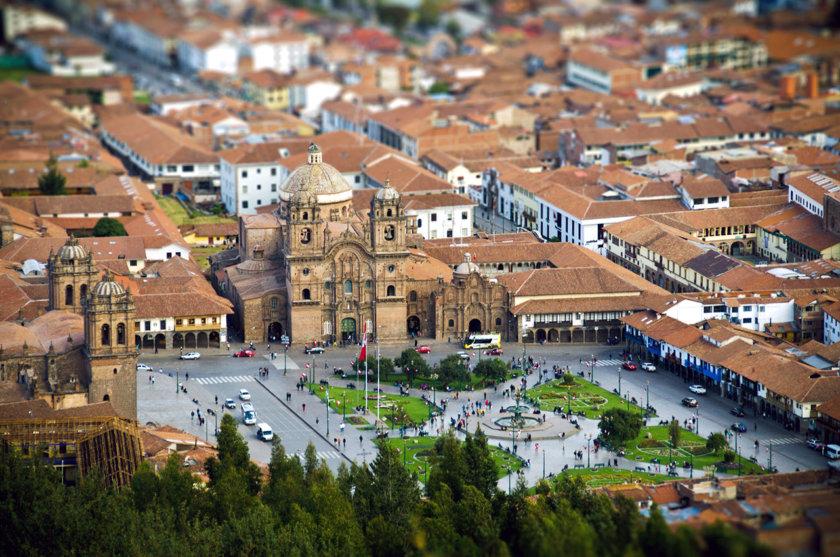
2. The Basilica of La Merced
A few steps from the main square, in front of the Plazoleta Espinar, is the Church and Convent of La Merced.
It is an imposing temple with a baroque interior and a magnificent cloister with several paintings.
Among the objects of great value that can be found in the church, there is the monstrance which weighs 44.5 pounds and is 4 feet high.
With its 24 carats, 1518 diamonds and 615 precious stones, it is considered one of the most important jewels in Peru and even in all of South America!
- Free admission, museum (recommended) 6 soles
- Open from 8 am to 12:30 pm and from 2 pm to 5:30 pm
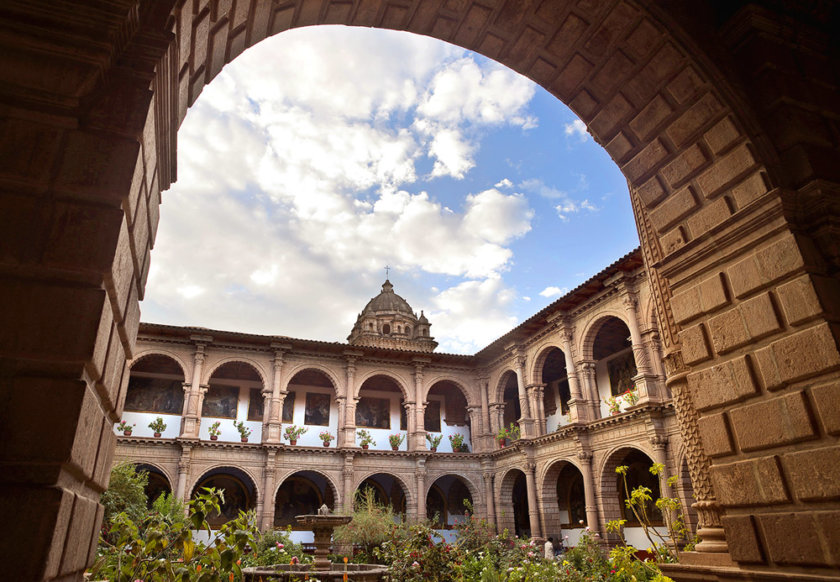
3. The 12 Angled Stone
Among Cusco’s tourist attractions is the 12 Cornered Stone on Hatun Rumiyoc Street.
But it is more than a rock!
It is a great example of Inca engineering: very thick walls with stones so perfectly fitted together that, even without the use of cement, they are still standing today after several centuries.
This construction technique can be observed in several Inca archaeological sites (Coricancha, Sacsayhuaman, Machu Picchu, etc.) but due to its complexity, this stone is classified as Cultural Heritage of the nation.
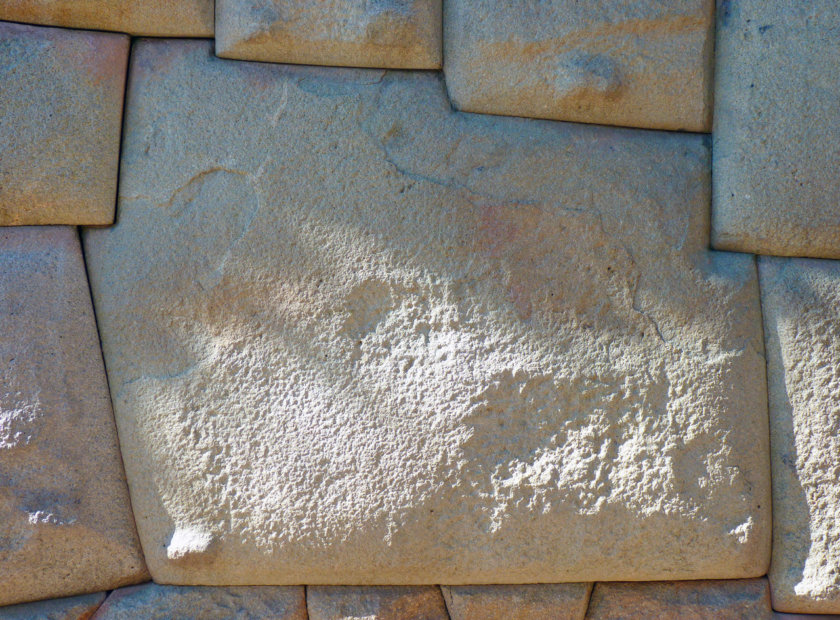
4. The Coricancha and the convent of Santo Domingo
The Coricancha, also spelled Koricancha or Qoricancha, means “golden temple” in Quechua.
It was the most sacred temple of the Inca Empire and the prime ceremonies were held here!
It was dedicated to the Sun and it is estimated that up to 40,00 priests would have lived within its walls.
Richly decorated with gold, silver and precious stones, the temple was destroyed by the colonizers who erected the Convent of Santo Domingo (16th century) over its remains.
Some of the original walls can still be seen, made of large stone blocks that fit together perfectly, a typical Inca construction process.
- Entrance fee 15 soles, the Coricancha museum is accessible with the tourist ticket.

5. The Neighborhood of San Blas
San Blas is without a doubt the most charming neighborhood in Cusco. With its cobblestone streets, small artisan shops, cozy cafes, and art galleries hidden inside whitewashed houses with bright blue doors, it’s a place full of character and creativity.
Start at the Plazoleta San Blas and don’t miss the Workshop Museum of Hilario Mendívil, one of Peru’s most iconic artisans of the 20th century, known for his distinct religious sculptures with elongated necks.
Then walk down Calle Carmen Alto to reach l’Atelier Café-Boutique. Its second-floor balcony is one of the best photo spots in San Blas, with a lovely view over the rooftops and narrow streets.

6. The market of San Pedro
You can find it in the center of Cusco.
Incredible but true: Its construction was directed by Gustave Eiffel!
You will find a great variety of potatoes and quinoa, fruits and vegetables, cheeses, breads, flowers, handicrafts and herbs used in traditional medicine.
If your stomach is already used to street food, you can take the opportunity to have a nice fresh fruit juice or try one of the cheap Peruvian dishes.

7. The Inca Ruins Around Cusco
Cusco is surrounded by several impressive Inca archaeological sites located in the hills just outside the city.
The four main ruins are accessible only with the Cusco Tourist Ticket:
- Sacsayhuamán: An incredible Inca fortress made of massive stone blocks—some weighing up to 300 tons. It also offers a stunning panoramic view of Cusco.
- Qenqo: A ceremonial site where rituals, sacrifices, and mummifications were performed. You’ll see a carved zigzag channel used to pour chicha or llama blood for interpretation by priests.
- Puca Pucara: A military outpost with large walls, terraces, and stairs, which controlled the route between Cusco and the Sacred Valley.
- Tambomachay: A peaceful site dedicated to the worship of water, with a remarkable aqueduct system that still functions today.
If you’re short on time, I recommend this affordable half-day tour that includes all four Inca sites—with hotel pickup included.
You can book the tour here:
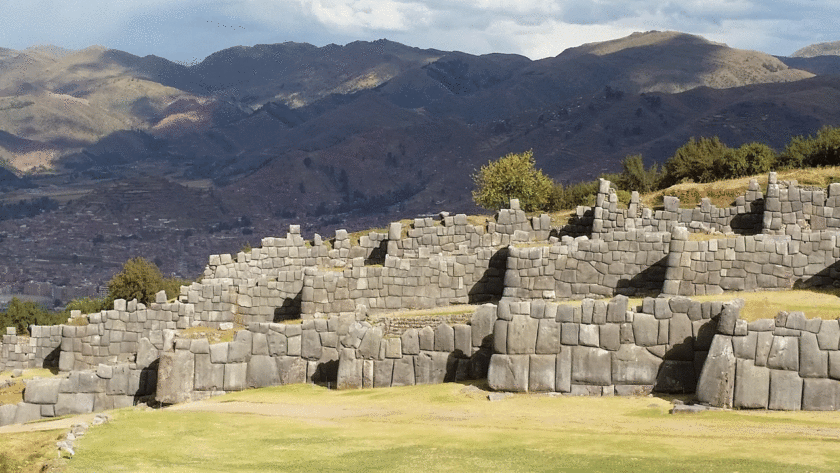
8. Climb Up to the White Christ Viewpoint
Located just beside Sacsayhuamán, the White Christ (Cristo Blanco) is one of the best spots to enjoy a panoramic—and free—view over Cusco.
This 26-foot white statue with outstretched arms slightly resembles Christ the Redeemer in Rio de Janeiro and stands as a symbol of peace overlooking the city.
- From the Main Square (Plaza de Armas), the walk takes about 30–40 minutes. It’s a steady uphill path, so take it slowly—remember, the altitude can make it feel harder than it is.
- If you prefer not to walk, you can catch a local bus (1 sol) from Puente Rosario Street, near the Coricancha.
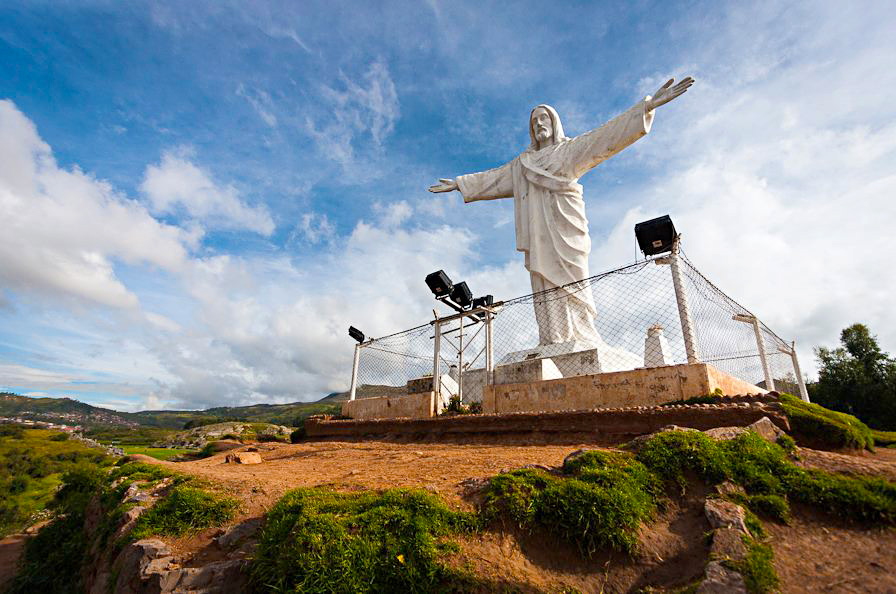
9. The Machu Picchu Museum
The Casa Concha is a museum in Cusco that is not very well known.
However it contains an important collection of 360 artifacts from Machu Picchu that were returned to Peru by Yale University.
It is quite a dynamic exhibit with National Geographic photos, an Inca house, interactive videos (including a map of Machu Picchu), etc.
In addition, this Machu Picchu museum is located in a large colonial residence that was built over the remains of the Palace of the Inca Tupac Yupanqui.
- Admission 20 soles, students 10 soles
- Address: Santa Catalina Ancha, 320 (very close to the Plaza de Armas)
- Monday to Saturday 9h-17h
- Casa Concha’s website
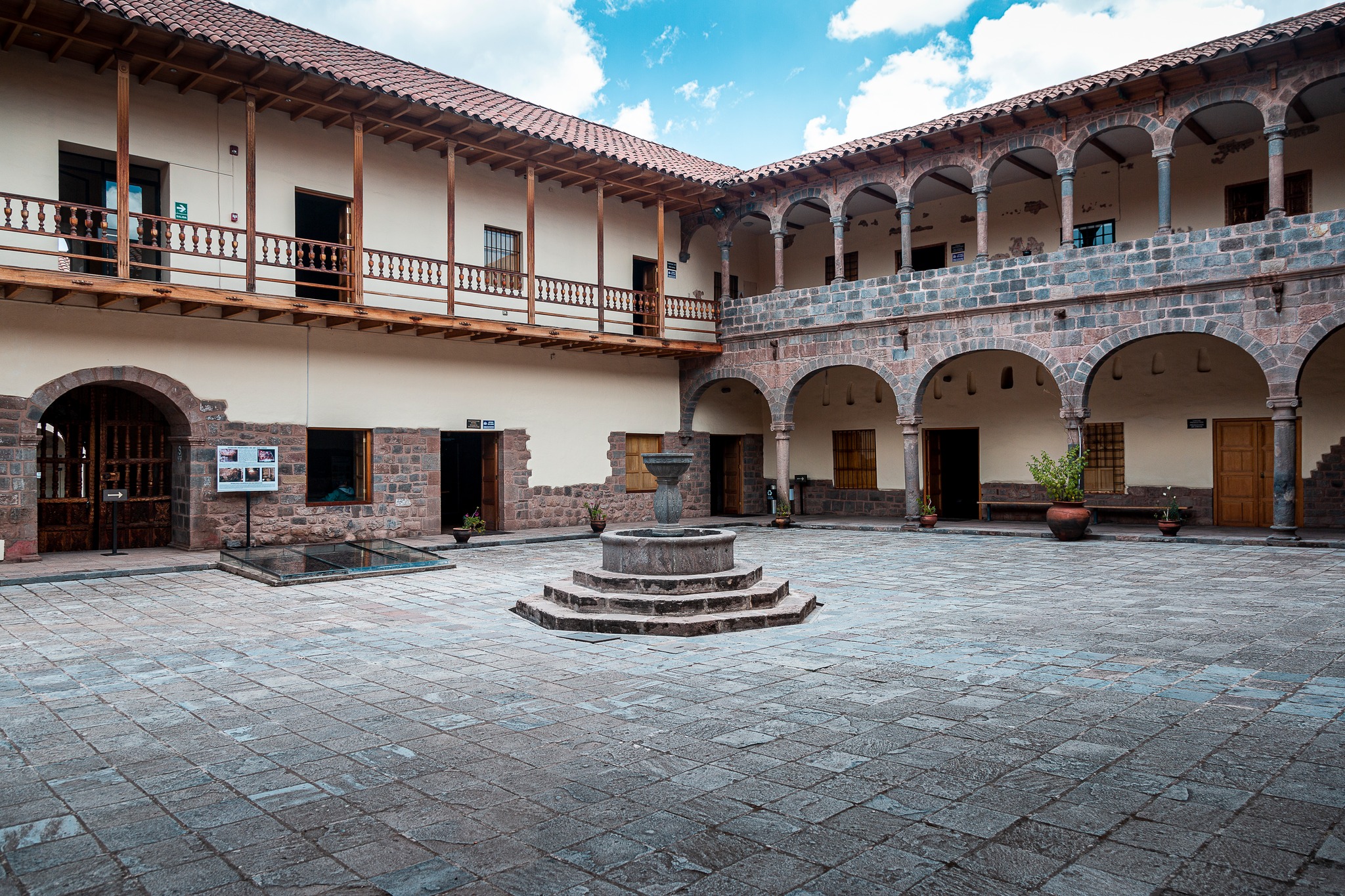
10. Learn More About the Coca Leaf
The Coca Museum in Cusco is a small but fascinating museum that highlights the cultural, historical, and medicinal importance of the coca leaf for Andean civilizations.
Often misunderstood because of its association with cocaine, this museum helps set the record straight and restore the coca leaf’s true value as a sacred plant that has been used for centuries by local communities.
I truly enjoyed the visit—it’s informative, respectful, and gives you a deeper understanding of the region’s traditions.
- Admission: 10 soles (5 soles for students)
- Address: Cuesta San Blas 618, Cusco
- Official Facebook page of the Coca Museum

11. The museums of Cusco
Among the best museums in Cusco is the Museum of Pre-Columbian Art (entrance 20 soles, students 10 soles) located in the Plaza Nazarenas with its magnificent collection of objects from pre-Columbian and colonial times. You can finish the visit at the MAP café, one of the best restaurants in Cusco.
I also recommend the Inka Museum (entrance fee 20 soles) in a beautiful 17th century colonial house with mummies, ceramics, weapons and qeros (ceremonial vases). It is a pity that it is little known!
The Regional Historical Museum (entrance with the tourist ticket) is a small museum with an exhibition on the history of Cusco and Peru, an ideal activity for children in Cusco.
The Archbishop’s Palace (entrance 15 soles or with the religious circuit ticket) is a must-see in Cusco.
It houses the museum of religious art with a large collection of paintings of the Cusco School. It is on its outer wall, facing the street Hatunrumiyoc, that is the famous 12 angled stone.
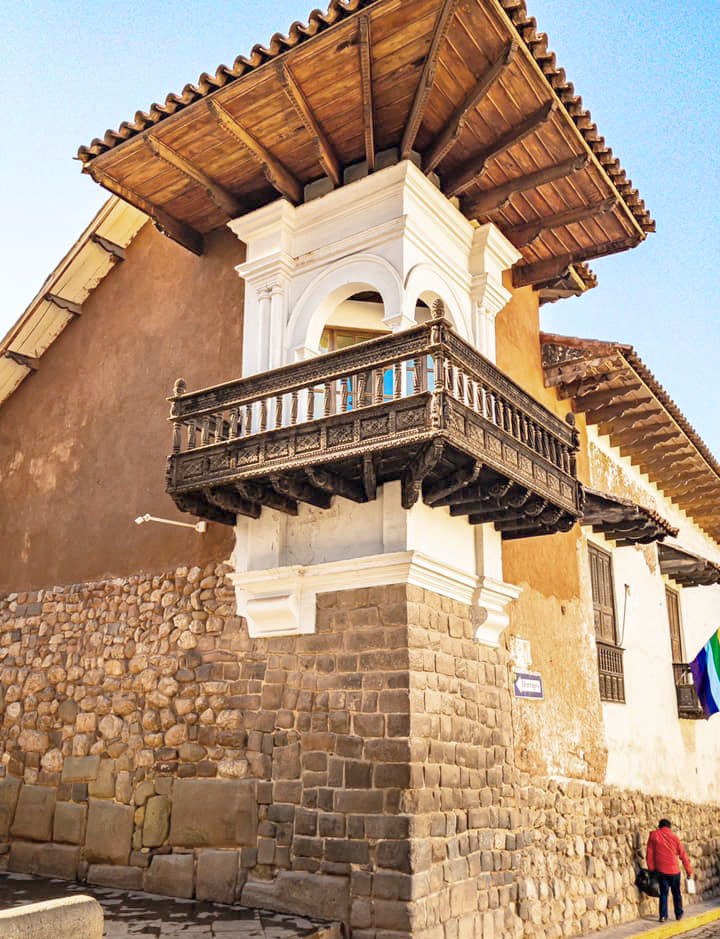
12. Discover the art of Cusco
There are great artisans and artists in Cusco!
I suggest you visit some workshops in the neighborhood of San Blas and don’t be afraid to start a conversation with painters, sculptors, etc.
The Museum of Popular Art (entrance with the tourist ticket) presents works of Cusco’s famous artisans: sculptures, ceramics, photos, depicting typical dances, daily scenes, etc.
You can also take a free tour to the Máximo Laura Museum which presents the colorful works of the Peruvian artist Máximo Laura.
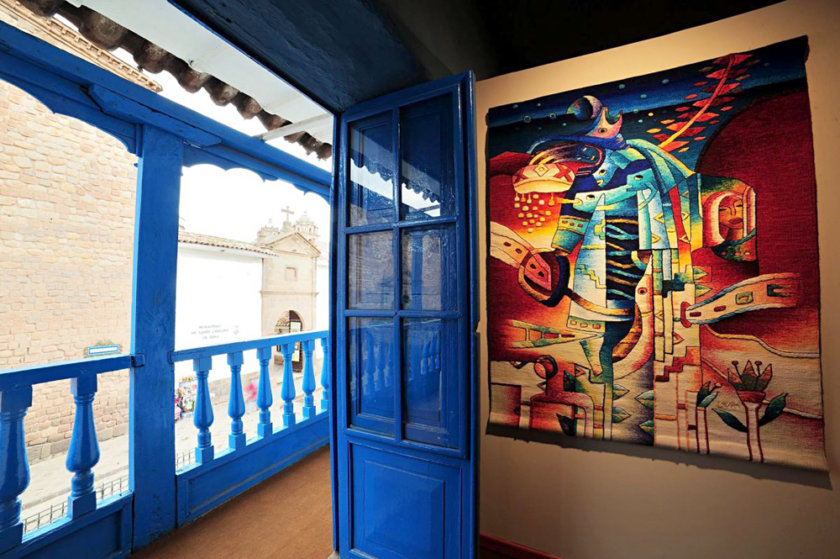
13. Make Your Own Chocolate
Looking for a fun and family-friendly activity in Cusco? The Chocomuseo offers a two-hour workshop where you can create your very own chocolate lollipop—from bean to bar!
The experience starts with a short and interesting introduction to cacao, followed by the hands-on process: you’ll roast cacao beans, grind them, and finally mold your lollipop using the ingredients of your choice.
Along the way, you’ll also get to taste a variety of chocolate-based products—from liquors to jams and other sweet surprises—all included in the price.
I actually did the workshop with a group of adults, and we all had so much fun—it’s not just for kids!
You can book the chocolate workshop here:
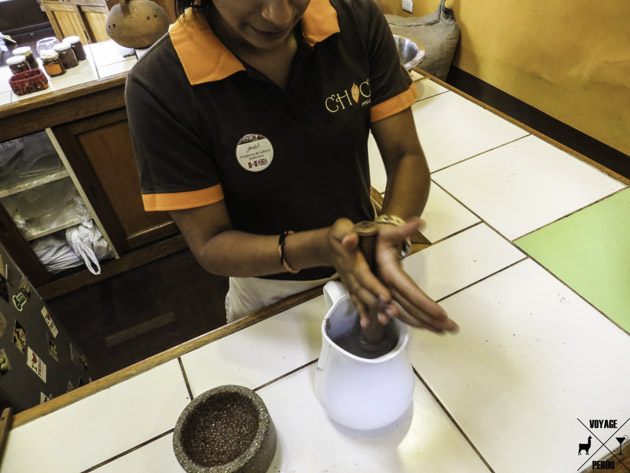
14. Take the Tourist Bus in Cusco
The Cusco sightseeing bus is a great option for a comfortable 2.5-hour guided tour around the city—perfect if you want to enjoy the views without walking too much at altitude.
It’s especially practical for families, seniors, or anyone affected by the elevation. You’ll still get to see key places like San Cristobal Plaza and the White Christ viewpoint without having to hike uphill.
The tour also offers great panoramic views from the open-top bus, and the commentary helps you understand the highlights of Cusco as you go.
You can book your spot here:
15. The Center for Traditional Textiles of Cusco
It is an NGO that was founded to support the weaving communities of Cusco and to preserve 2,000 years of knowledge and craft techniques.
There is a free and very interesting museum that presents the weaving techniques, the patterns used and the clothes used for big celebrations (weddings, festivals, ceremonies).
You can also watch the weavers at work!
Since 2020, the center offers one-day weaving workshops, given by members of the communities.
- Address: Avenida El Sol, 603, Cusco
- Website of the Center for traditional textiles of Cusco
You can also go to Awana Kancha in the Sacred Valley where you can see vicuñas, guanacos, alpacas and llamas, as well as discover the whole textile manufacturing process.
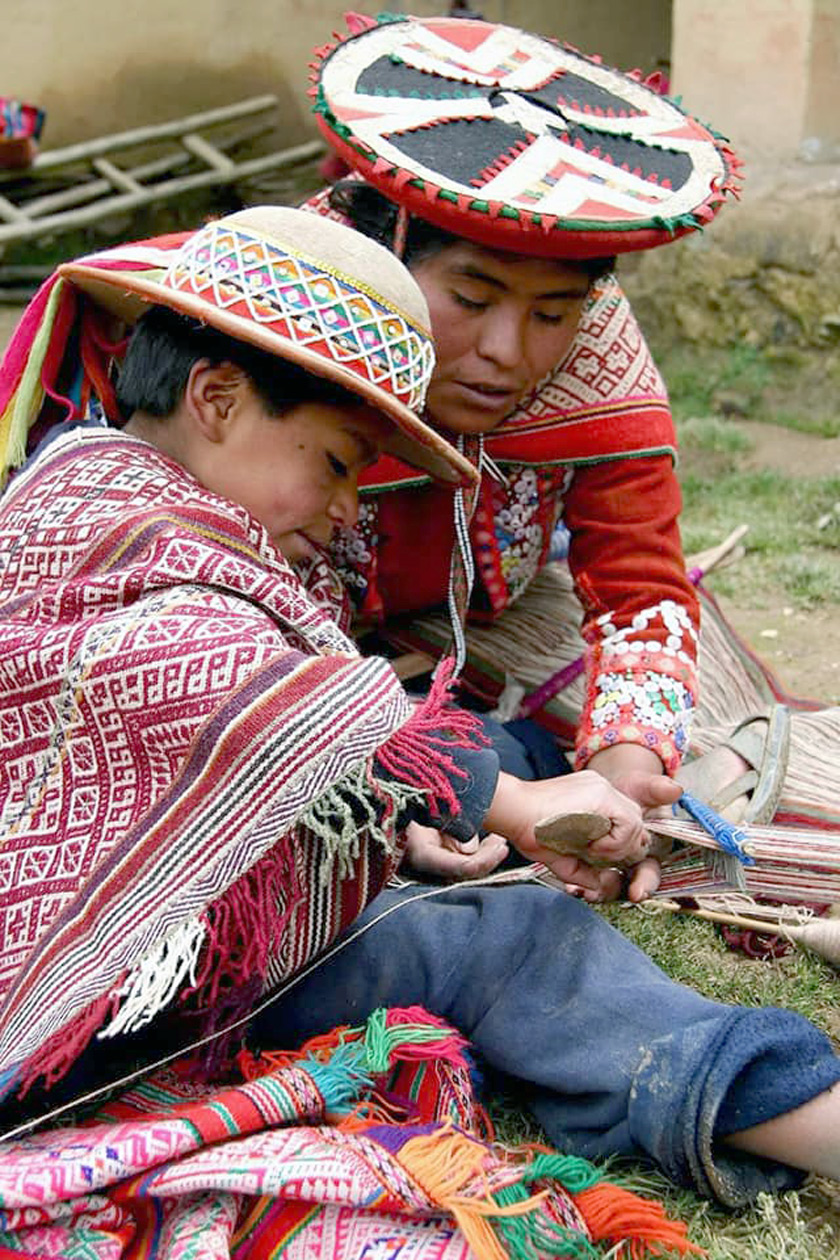
16. Preparing a good pisco sour
Peruvian gastronomy has been in fashion for several years, and one of its proudest representatives is the pisco sour, the national cocktail!
If you want to have a good time discovering Peruvian gastronomy, I recommend this visit with a chef, who will first take you to explore the San Pedro market.
Then, you will learn how to cook 3 traditional dishes, picarones (for dessert) and 2 pisco-based cocktails.
Book it here:

17. Take a free salsa class
If you feel like partying in Cusco with other travelers, the clubs around the main square offers free salsa and bachata classes starting at 9 pm.
Of course, the class then turns into a party around 10pm, and you can even take advantage of the discount coupons that the promoters will give you.
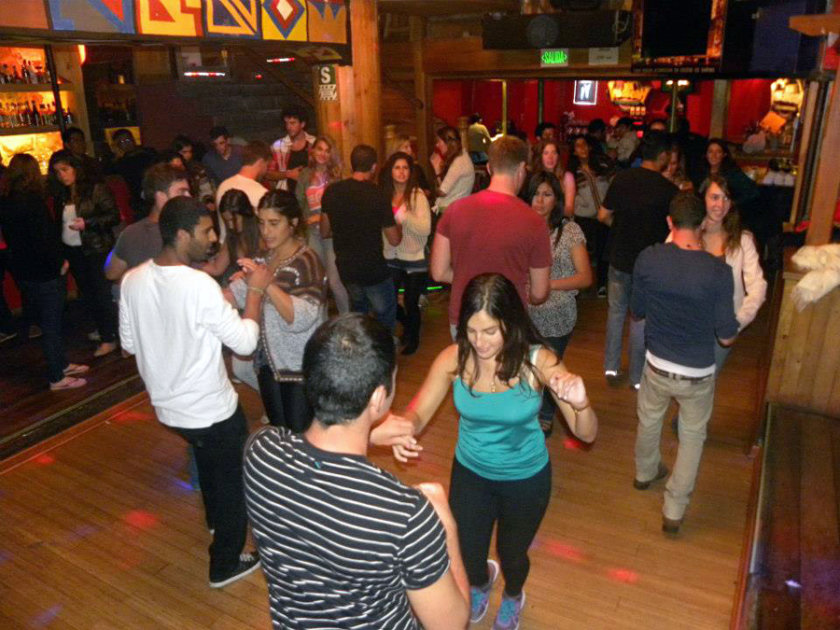
18. Stargazing in the Southern Hemisphere
Look up at the Peruvian sky and you’ll discover a whole new celestial landscape—completely different from what you’re used to in the Northern Hemisphere.
Here, you won’t find familiar constellations like the Big Dipper or Ursa Minor. Instead, you’ll easily spot the Southern Cross and other stars unique to the Southern Hemisphere.
If you love astronomy, don’t miss a visit to the Planetarium of Cusco.
It’s a unique experience that begins with stories and ancient Inca legends about the stars, followed by a guided projection that explains the southern constellations—and finally, you get to observe the sky through a telescope under the clear Andean night.
You can book the planetarium tour with hotel pickup here:
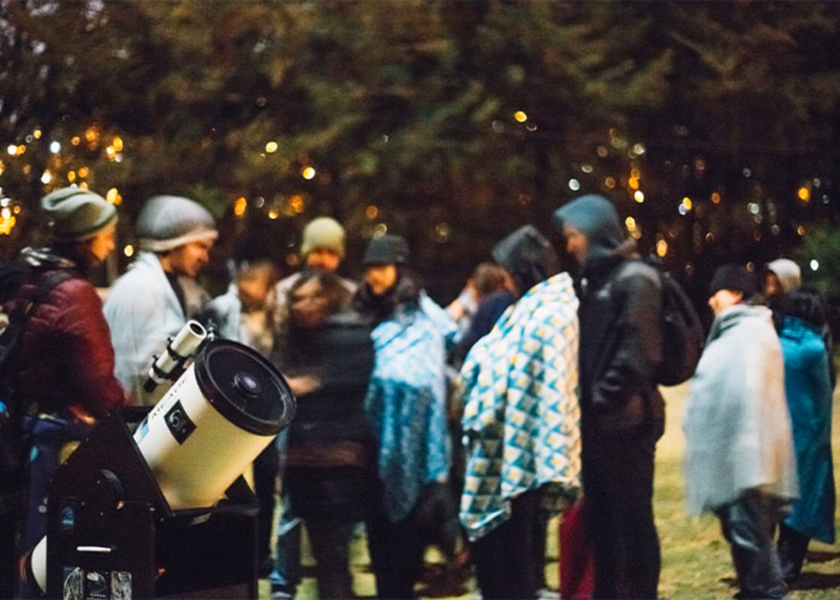
Around Cusco
19. Exploring the Sacred Valley
The Sacred Valley of the Incas is one of the top places to visit near Cusco—rich in history, culture, and spectacular landscapes.
There’s so much to see that you’ll need more than one day. Here are some of the main highlights of the Sacred Valley:
- Chinchero: A small, traditional Andean village famous for its textile workshops. You can watch demonstrations of dyeing and weaving, and buy beautiful handmade products—often cheaper than in Cusco.
- Pisac: Known for its vibrant artisan market and its impressive archaeological site overlooking the valley—one of my favorites!
- Ollantaytambo: A picturesque town that still follows the original Inca layout. Its fortress ruins and surrounding views are simply breathtaking.
- Maras: Home to over 3,000 salt ponds still used today, just as they were in Inca times. A truly unique sight!
- Moray: These stunning circular terraces were used as an Inca agricultural lab, testing crops at different altitudes and microclimates.
For more details, don’t miss my article: 21 Things to See and Do in the Sacred Valley
Since it’s not possible to visit everything in one day, you have two good options: take a colectivo (shared minibus) from Puputi or Pavitos street, or join a guided day tour to make the most of your time.
- Day 1: I suggest visiting Pisac, Ollantaytambo, and Chinchero. This tour includes hotel pickup and lunch:
- Day 2: Visit Maras and Moray on a half-day tour with hotel pickup included:
- Looking for something more adventurous? Try this ATV tour to Maras and Moray—an exciting way to explore the countryside!
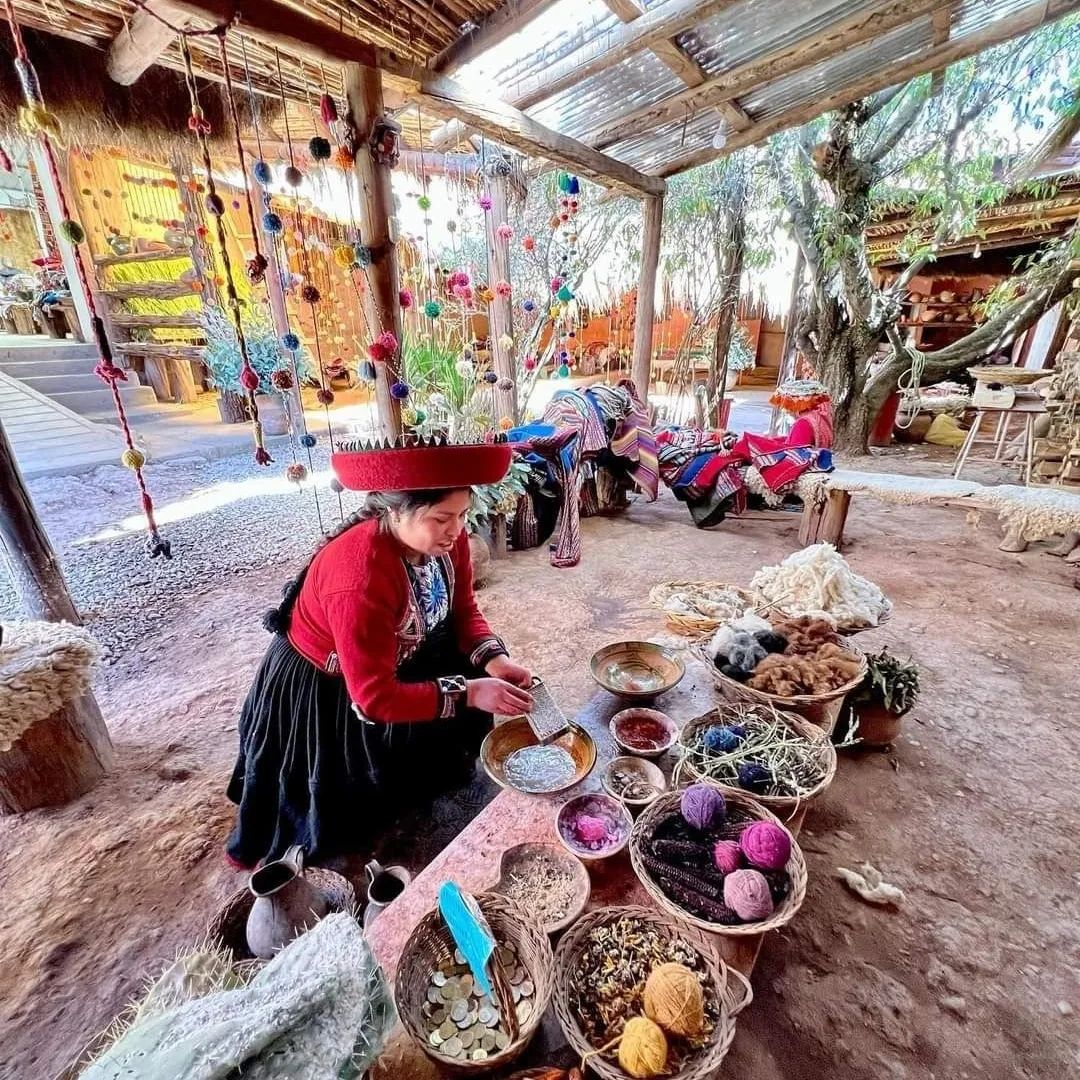
20. Exploring the south of the valley
In addition to the must-sees of the Sacred Valley, there are other less touristy sites in the south of the region:
- Tipon is known for its Inca ruins with an admirable hydraulic system with still functioning pipes. It is also known among locals as the best place to eat guinea pig!
- Pikillacata is a great archaeological Wari site (a village that was conquered by the Incas) with about 700 structures.
- Andahuaylillas is a small village that houses a true colonial treasure: the church of San Pedro, nicknamed the Sistine Chapel of America for its richly decorated baroque interior.
To visit the south of the Sacred Valley of the Incas, you can take this tday trip with pick-up at your hotel in Cusco.
It includes the visit of Tipon, Pikillacta and Andahuaylillas before returning to Cusco around 2:30 pm. It can be easily booked here:
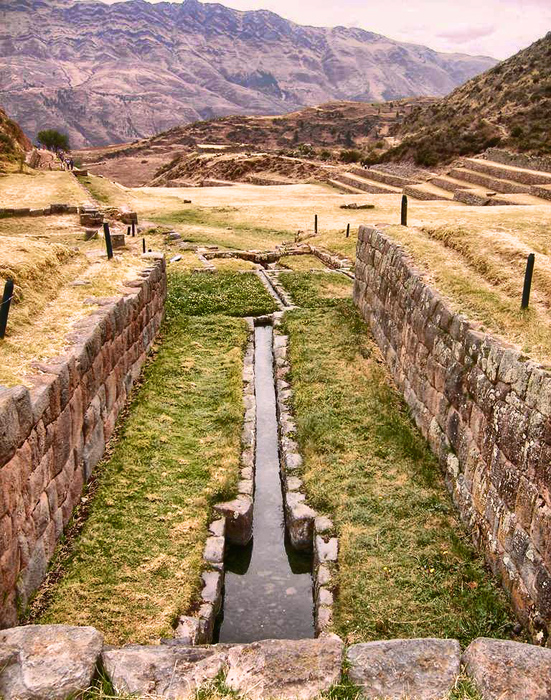
21. The Iconic Machu Picchu
The breathtaking Inca citadel of Machu Picchu is one of the most famous places in the world—and for good reason.
Built in the 15th century with massive stone blocks and hidden among the lush green mountains of Urubamba, Machu Picchu was an important cultural, religious, and administrative center of the Inca Empire.
Today it is one of the top attractions in Peru, listed as a UNESCO World Heritage Site and chosen as one of the New 7 Wonders of the Modern World.
You can also choose to climb Huayna Picchu or Machu Picchu Mountain for amazing panoramic views—but availability is very limited, so plan ahead!
Important: Machu Picchu is the most visited site in Peru, and tickets sell out fast. Booking your entrance and transportation in advance is essential, especially during high season.
There are 3 official ticket options:
- Machu Picchu Only: Basic entrance, ideal for first-timers.
- Machu Picchu + Huayna Picchu: Popular climb with epic views—must be booked months ahead!
- Machu Picchu + Machu Picchu Mountain: A less crowded but more demanding hike.
Want help deciding between the two mountains? Check out my full comparison: Huayna Picchu vs. Machu Picchu Mountain: What’s the Difference?
How to Get to Machu Picchu
There are several ways to reach Machu Picchu from Cusco or the Sacred Valley:
- By train from Cusco (3h) or Ollantaytambo (1.5h) to Aguas Calientes – the most comfortable option.
- By bus to Hidroeléctrica, then a 2.5–3h walk to Aguas Calientes – cheaper but longer.
- On a multi-day trek: the famous Inca Trail (ends at the citadel), Salkantay, Lares, or the adventurous Jungle Trek.
Book your transportation
Train to Aguas Calientes:
Bus from Aguas Calientes to Machu Picchu:
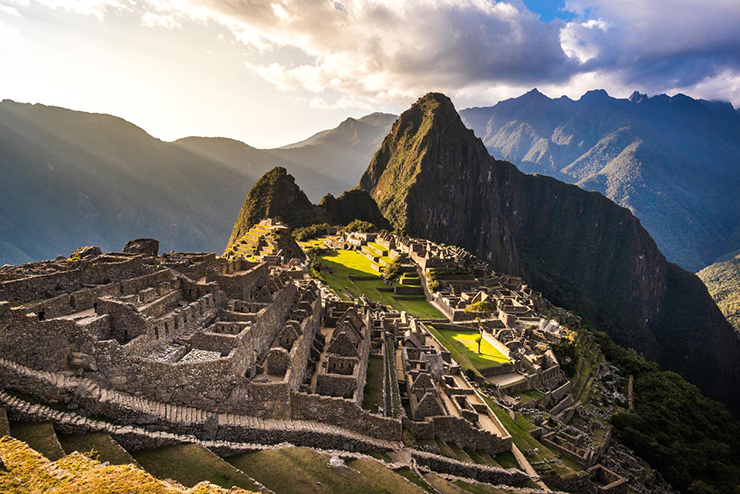
22. The Rainbow Mountain
Its original name is Vinicunca, but it’s more widely known as the Rainbow Mountain or the Mountain of the Seven Colors.
With its natural mineral stripes of red, yellow, and turquoise, it has become one of the top things to see in Cusco—and even in all of Peru.
The most common way to visit is with a 1-day or 2-day tour from Cusco. It’s a long day (about 3 to 4 hours driving each way), so make sure you allow enough time in your itinerary and book in advance.
Here’s an excellent tour with pick-up from your hotel in Cusco, breakfast and lunch included, a bilingual guide, oxygen, and first aid:
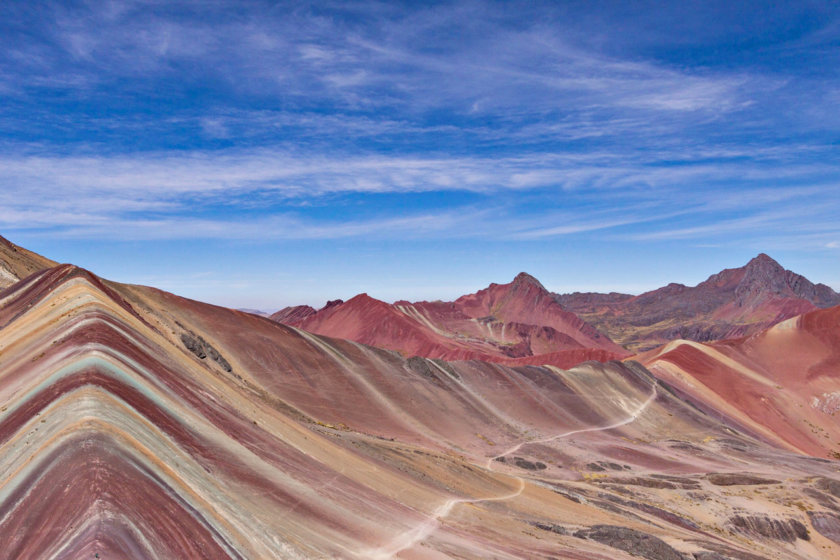
23. Palccoyo Mountain
Rainbow Mountain is a beautiful natural site, but it is true that it has lost some of its charm since it became such a tourist attraction.
There is another colorful mountain in Cusco, much less known, which also offers beautiful landscapes: Palcoyo (also spelled Palccoyo).
Along the way, you will see small communities, alpacas and vicuñas, and a stone forest.
From the summit you will have a view over the Cordillera and Ausangate, one of the highest mountains in Peru.
The simplest way to get to Palcoyo from Cusco is to take a tour.
I recommend this small group tour to Palcoyo, with pick up from your hotel, breakfast and lunch. You can book it here:
- I suggest you read My Complete Guide to Palcoyo where you will find all the practical information to know how to get there with a tour or on your own
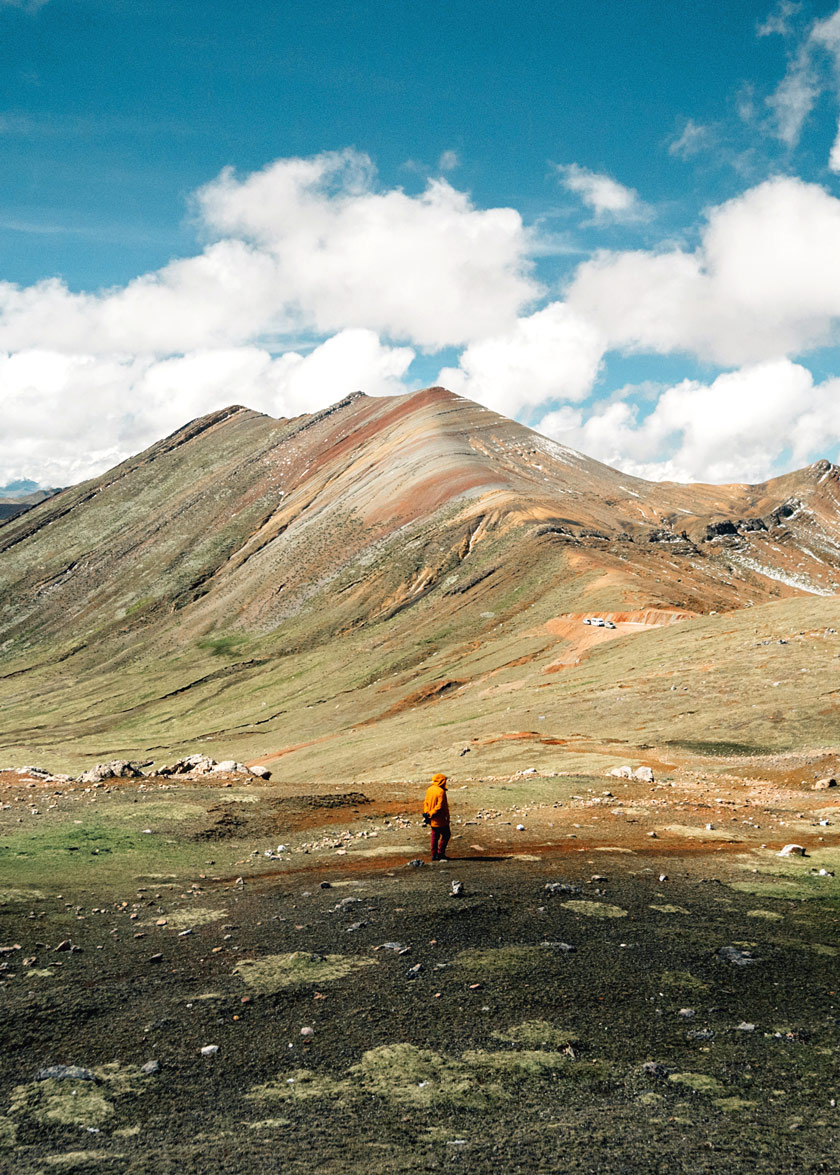
24. The Humantay Lagoon
The Humantay Lagoon is a natural wonder fed by the Nevado Humantay, and is definitely one of the most beautiful places to see in Cusco.
It is known for its turquoise water at 13,780 feet altitude that contrasts with the white mountains that surround it.
It is reached by a hike of just over a mile (1h30-2h) which is not really complicated or technical, but can be tiring due to the altitude.
For the first 30 minutes, the path is fairly flat, but then it is a steady climb, so go carefully and calmly.
You can also rent a horse (90 soles one way) to ease the way.
Visiting Humantay
- To get there without an agency: take a bus from the arcopata terminal to Mollepata (15 soles, 1h40), and then take a cab to Soraypampa (20 soles by bus, or 50 soles by private cab). From Soraypampa you have to walk 1h30-2h to get to the lake.
- Entrance to Humantay Lake costs 10 soles for foreigners and 5 soles for nationals.
- It is possible to camp in a very close area called Soraypampa (1 mile approx.), but keep warm because it is very cold at night.
If you decide to go on your own, just keep in mind it’ll be a long day due to transportation. So, it’s best to head out very early if you want to make it back to Cusco the same day. I also recommend pre-arranging your return trip with the same cab to avoid any last-minute hassle.
If you don’t have much time and prefer not to worry about transportation, I recommend this economic tour to Humantay with pick up at your hotel in Cusco that includes breakfast, lunch and entrance to the lake.
Book this tour here:
- To see all the information about the hike to the lagoon, here is my article: All About Laguna Humantay in Cusco
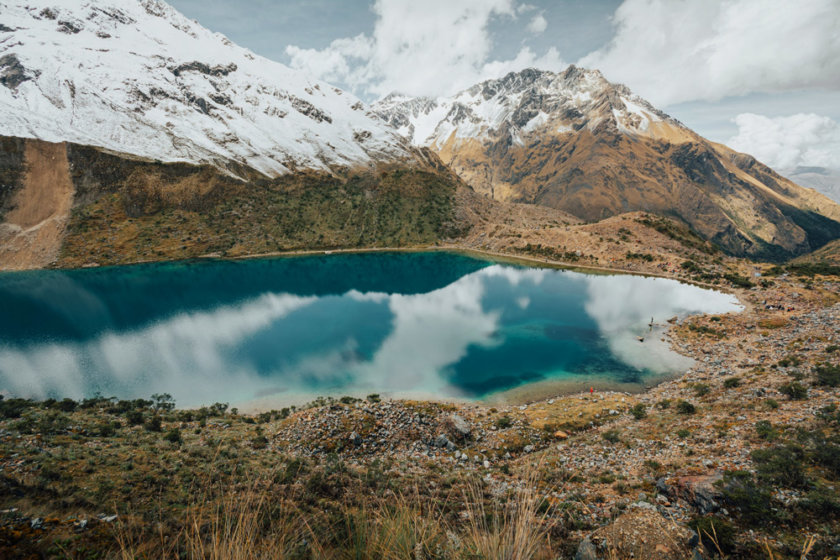
25. The Perolniyoc waterfall
Perolniyoc is a stunning spot to visit while in Cusco.
It features a breathtaking 260-foot waterfall surrounded by lush vegetation, right next to a beautifully restored archaeological site of the same name (also known as Raqaypata).
Here, you’ll find both Inca and pre-Inca structures, believed to have served as an administrative and control point for the Sacred Valley. The panoramic view from the top is absolutely worth the effort!
How to Visit Perolniyoc:
- Take the Pachar–Huarocondo road to the community of Socma, about 2 hours from Cusco, where the hike begins.
- Entry is free every day, but it’s best to go early in the morning to enjoy the site without crowds and with better lighting.
Another great option is to join a guided day tour from Cusco, which includes hotel pick-up for extra convenience.
The tour usually starts with a hike from Socma up to Raqaypata (around 1 hour), followed by a descent to the Perolniyoc waterfall. After that, you’ll head back to the community of Socma for a delicious lunch made with local ingredients.
To wrap up the day, the tour includes a stop at the lesser-known Inca site of Ñaupa Iglesia before heading back to Cusco. You can book the tour here:
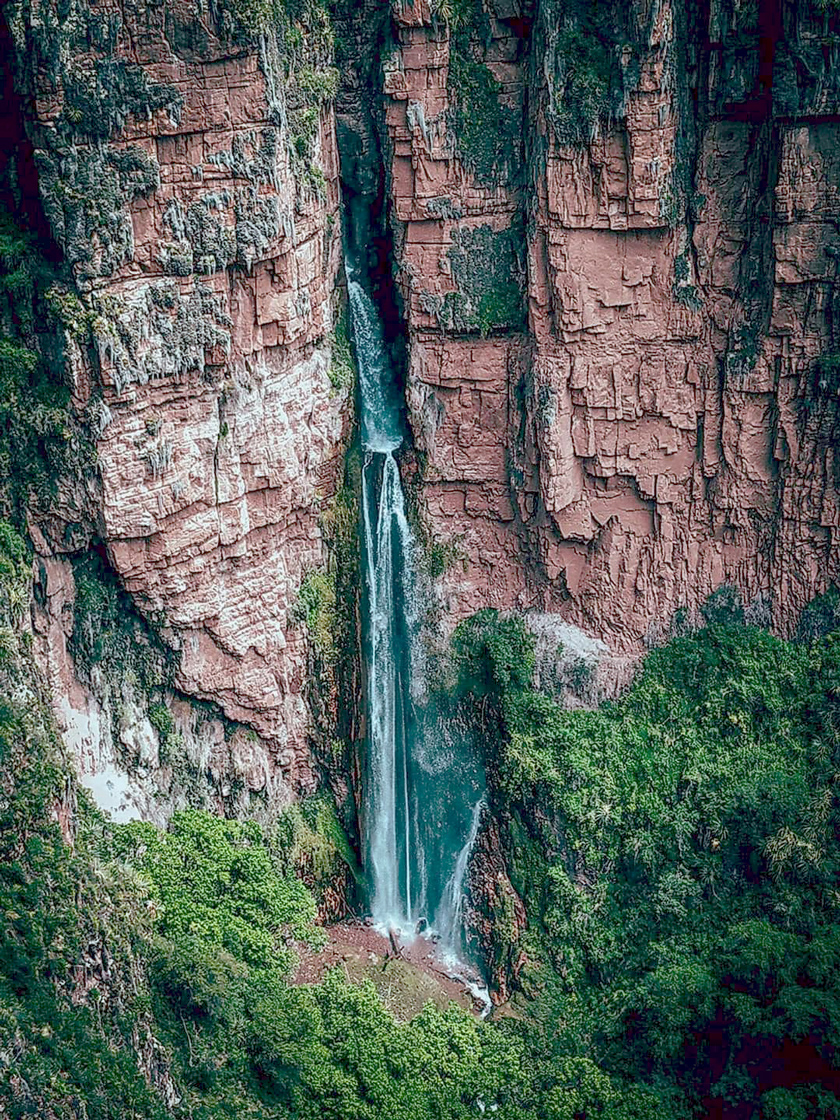
26. Hike to Waqrapukara
Waqrapukara, which means “horn-shaped fortress” in Quechua, is one of the most impressive off-the-beaten-path sites near Cusco.
Located at 14,100 feet and overlooking the dramatic Apurímac River Canyon, the site is also called Llamapukara (“llama-shaped fortress”) by locals who see llama ears instead of horns.
If you enjoy hiking, solitude, and ancient ruins, this is an experience you won’t want to miss.
The site includes Inca terraces, ceremonial plazas, and walls. It was originally built by the Qinchas and later taken over by the Incas, becoming an important political and religious sanctuary. It’s now a National Cultural Heritage Site of Peru.
The site is remote—so getting there requires some planning. Here are the main starting points for the hike:
- Huayqui: 4-hour hike
- Santa Lucía: 2.5-hour hike
- Sangara: 3-hour hike
- Pitumarca: 3-hour hike (this is the route I recommend)
Here’s how to get there from Cusco via Pitumarca:
- Take the earliest bus toward Sicuani from the Huayruropata terminal (approx. 2h30, 7 soles)
- Get off at the Chuquicahuana bridge and take a colectivo (around 120 soles round trip) to Qenterococha Lake
- From the lake, hike 5 miles to reach the site
- During rainy season, road access to the lake may be blocked, adding 2 hours to the walk
If you prefer a stress-free option, it’s best to book a guided tour to Waqrapukara from Cusco. It includes hotel pick-up, breakfast in Pitumarca, a box lunch, and a bilingual guide.
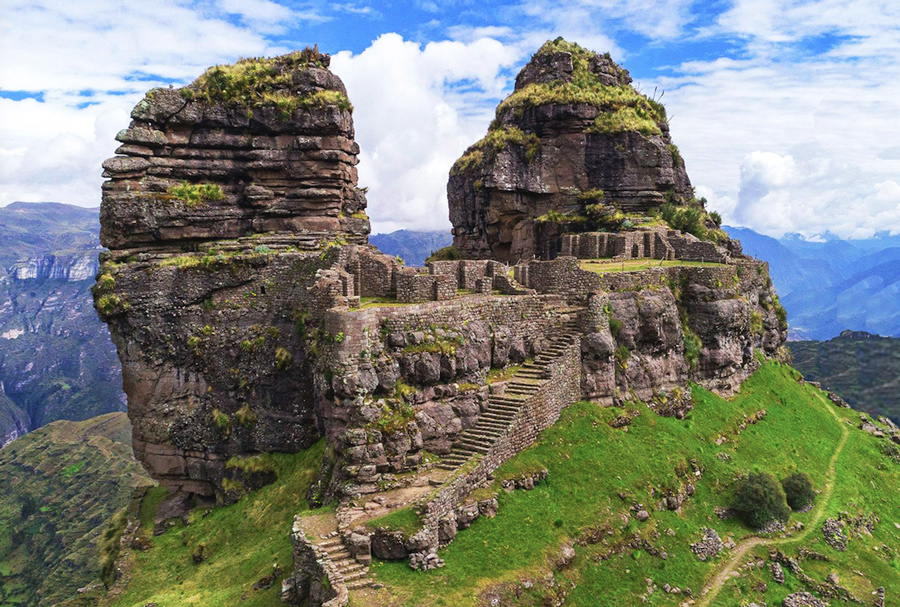
27. Reaching the Sun Gate
The Inti Punku or Sun Gate was an Inca astronomical observatory and a checkpoint for the roads leading to Machu Picchu and the Amazon.
It offers a magnificent view of the valley and mountains, such as the Nevado Veronica, which was considered sacred by the Incas.
The Sun Gate can be reached from Ollantaytambo, with a hike of about 6-7 hours (9 miles approx).
It’s quite a climb, so it’s best to be fit, but it’s worth the effort!
The trail first passes through the Cachicata quarries, which were used by the Incas to build the Ollantaytambo fortress, and then you have to walk another 2 hours to get to Intipunku.
You can also take a tour to Inti Punku with pick up at your hotel in Cusco.
It includes breakfast in the community of Pachar, the hike with a guide, lunch and a stop at the Cervecería del Valle, a craft brewery that has won several international awards!
Book it here:

28. The Queshuachaca Bridge
The vast Inca empire was united thanks to a network of roads that crossed sometimes very uneven terrain (mountains, basins, canyons, etc.).
For this reason, they installed several hanging bridges, built in vegetal fiber, which had to be rebuilt regularly.
The Q’eswachaka bridge is the only one that has survived and it is thanks to the effort of the local communities that kept this tradition alive, gathering every year in June for 4 days to go to work.
It is a 90 feet long bridge that represents a lot of work, so everyone participates!
First they fetch the fiber (called Ichu), then the women weave it and the men install the ropes.
They remove the old bridge, install the ropes that will serve as a support base, and then all the rest. Of course, on the fourth day there is a big celebration with traditional music and dancing.
- Entrance to the Qeswachaka Inca Bridge: 10 soles for nationals or 20 soles for foreigners
Arriving to the bridge from Cusco on your own (no agency)
It is not easy, but it is possible:
- Take a bus to Combapata (10 soles, 3-4 hours) from this terminal: See location
- Take a colectivo from Combapata to Yanacoa (40 minutes)
- Option 1: Take a colectivo (10 soles, 1 hour) to Quehue and then pay for a car to the bridge.
Option 2: Take a cab from Yanacoa to the bridge and back.
It includes the visit to the Q’eswachaka bridge, the 4 lakes (Pampamarca, Asnacqoccha, Acopia and Pomacanchi), and the Pabellones volcano, with breakfast and lunch.
Book it here:
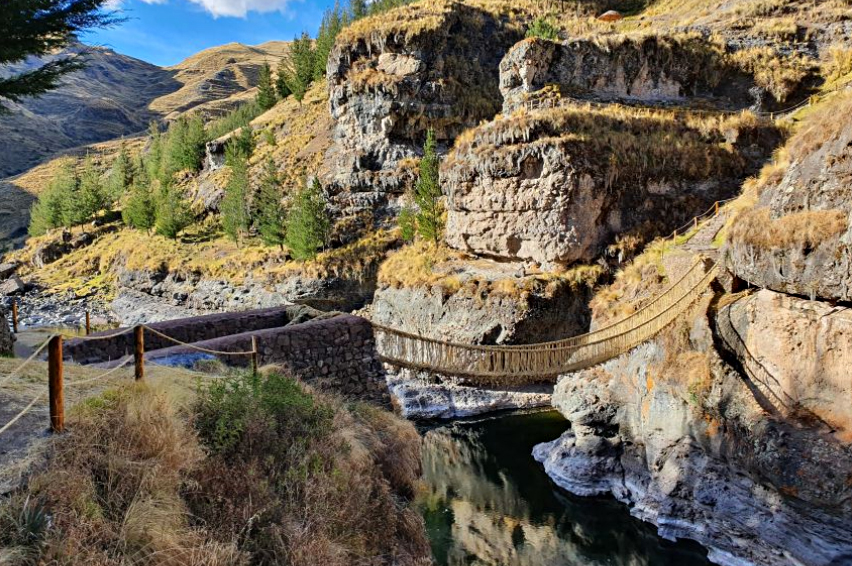
29. Experiential tourism
Spending time with a local community is without a doubt one of the most meaningful things to do in Cusco.
Over the past few years, several communities have started welcoming visitors to share their traditions and daily life—whether for just a few hours or over a full 1 or 2-day stay, including an overnight with a host family.
This type of community-based tourism helps preserve cultural heritage and provides families with a sustainable source of income. It’s a great experience to enjoy with friends, solo—or even with kids!
If you’re short on time, I recommend this half-day visit to a community in Chinchero.
You’ll be welcomed with music and dance, then take part in activities like agriculture (potatoes, quinoa), feeding the animals, and learning about traditional Andean weaving techniques.
The visit ends with a delicious lunch made from local organic ingredients, before heading back to Cusco. A perfect way to connect with real Andean life.
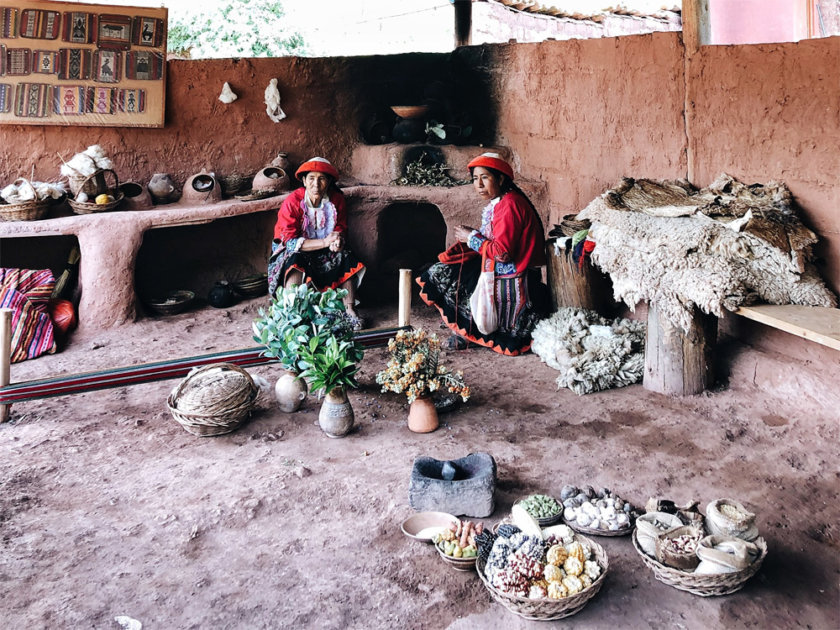
30. The other activities
There are so many tours and activities to do in Cusco, I can’t mention everything in the article.
But, there are some fantastic places you have probably never heard of like Singrenacocha Lake (3 hours from Cusco) and Suykutambo Canyon (4-5 hours).
Among the most beautiful treks in Cusco is the Choquequirao trek which still receives very few travelers.
You can also mention Huchuy Qosqo, and the Ausangate trek.
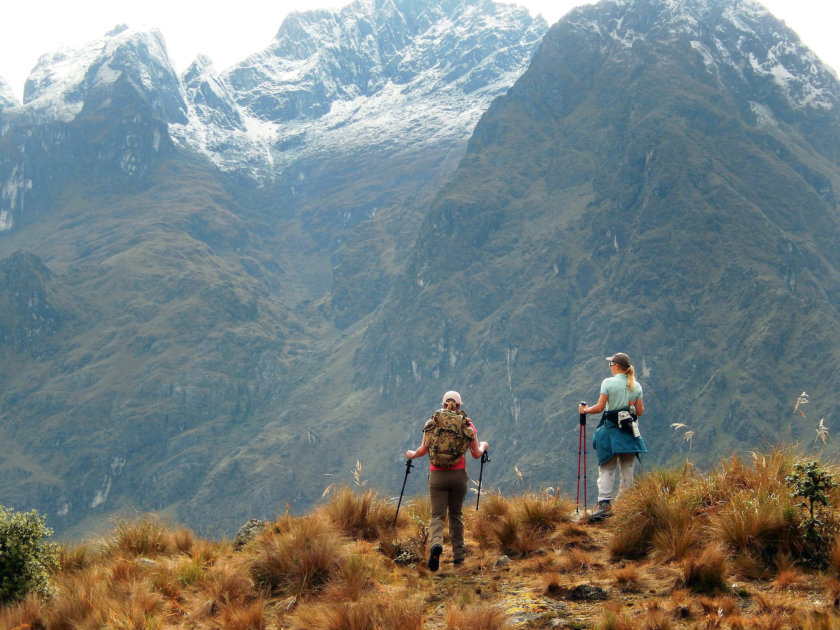
Where to Stay in Cusco
- Backpacker La Bo’M: One of the best hostels in Cusco. Founded by Sarah, a French expat, it includes a delicious crêperie next door. Perfectly located in the charming neighborhood of San Blas, it offers good Wi-Fi, a cozy vibe, and of course, amazing crêpes to start your day! Dorms from only $13 USD and private rooms from $33 USD.
- La Casona Real Cusco: For those looking for more comfort, this charming traditional-style guesthouse is located on a quiet street just steps from the Plaza de Armas. Impeccably clean, with hot water, great Wi-Fi, and a warm welcome. Breakfast included, all from just $76 USD per night!
- Hotel Tierra Viva Cusco San Blas: In the lovely San Blas neighborhood, this upscale hotel offers spacious rooms with very comfortable beds. Its modern décor with local touches and peaceful interior courtyard make for a relaxing stay. Buffet breakfast included. From $98 USD per night!
- Antigua Casona San Blas: A chic and intimate 4-star hotel in San Blas. It features very comfortable rooms, a warm atmosphere, and a tasteful blend of modern and traditional décor. Don’t miss their Piedra & Sal restaurant, one of Cusco’s best. Excellent breakfast included. From $250 USD per night.
- Palacio del Inka, a Luxury Collection Hotel: For a romantic stay in Cusco, this 5-star gem is housed in a spectacular colonial building across from Coricancha, with roots dating back to Inca times. Enjoy the indoor pool, gym, spa, bar, and restaurant. Delicious breakfast included. From $325 USD per night.
How to get to Cusco?
Getting to Cusco by bus
It is true that the bus is the cheapest way to go to Cusco, but it is also the longest.
Fortunately, buses have very comfortable seats that recline to 120 or 160 degrees.
- From Lima: 22h-23h (departure from Javier Prado and Plaza Norte terminals. I recommend the former if you are in the neighborhoods of Miraflores, Barranco or San Isidro).
- From Arequipa: 10h (there are day and night buses)
- From Puno: 6h30 (by direct bus that you can book here) or 10h (by tourist bus with visits to the church of San Pedro de Andahuaylillas, Raqchi, Pucara and buffet lunch, book it here)
- From Puerto Maldonado: 10h-12h (day and night bus available)
Going to Cusco byplane
Cusco’s Alejandro Velasco Astete airport receives flights from Arequipa (1h), Juliaca (45 min), Lima (1h15), Puerto Maldonado (50 min), as well as from La Paz (1h) and Santa Cruz (3h40) in Bolivia, and Santiago (3h30) in Chile.
Be careful when booking because some destinations (e.g. Arequipa, Juliaca) have only one direct flight and the other flights are with stopovers, which can make the trip much longer.
To find a cheap flight ticket to Cusco, I recommend you to use our comparator, in collaboration with Skyscanner: it is the guarantee to get the best price for your international flight and domestic flights!
Go to Cusco by train
- From Puno: a magnificent and comfortable trip (10h) with gourmet lunch, live music, transfer from your hotel (buy your train tickets here!).
- From Puno: the Belmond Andean Explorer luxury train, offering a 1 day and 1 night trip.
- From Arequipa: 2 days and 2 nights via Puno (Belmond Andean Explorer luxury train with visit to Titicaca, tea time, lunch, cocktail)
Going to Cusco by car
The road to Cusco is long and very winding and you have to be very cautious (always drive in daylight, watch out for other cars, etc.).
But visiting Peru by rental car is an option that offers great freedom and flexibility!
Like any expense you consider in your budget, it is paramount to compare the different options to find the best car at the lowest price.
The best advice I can give you is to go through Booking.com Cars for three reasons:
- You can easily compare prices from different agencies: a quick and easy way to find the best price!
- Cancellation is often free: so you have the right to change your mind at the last minute
- It offers a complete insurance that is less expensive than the other companies: it gives you instant savings
Click on the green button to find your car in Peru:
How to get from Cusco airport to the hotel?
The airport is about 20 minutes from the center of Cusco.
Cabs inside the airport usually charge 40-50 soles (or more) but if you go out a bit the price drops to 15-20 soles.
The advantage here is that it is not dangerous to take a cab outside the airport, as is (unfortunately) the case in Lima.
Another more comfortable option is to take a private transfer to your hotel in Cusco.
It is a fast and safe service, available 24 hours a day, 7 days a week. You can book it here:
How much time to visit Cusco?
Cusco deserves at least 1 full day with 1 day in the Sacred Valley.
Of course, if you have more time, I recommend you stay longer because there is so much to do and visit in Cusco.
To get the most out of Cusco it is best to buy the Tourist Ticket and I recommend you to read my detailed article Visiting Cusco in 2 or 3 days
Here I share with you my suggested itineraries to visit Cusco in 1, 2, 3 or 4 days:
What to Do in Cusco in 1 Day
Only have one day in Cusco? No worries—here’s a perfect itinerary to make the most of your time:
- Begin your day at the iconic Plaza de Armas, and visit both the Cathedral and the Church of the Society of Jesus.
- Stroll down the famous Hatun Rumiyoc Street to see the legendary Stone of the 12 Angles.
- Head to the San Blas neighborhood to explore artisan workshops, small galleries, and climb up to the viewpoints for panoramic views of the city.
Cusco in 2 Days
If you have two days in Cusco, here’s how I suggest organizing your time. On day one, follow the same itinerary as for 1 day in Cusco. On day two:
- Start the morning with a visit to the Coricancha and the Santo Domingo Convent.
- Head to the Center of Traditional Textiles to learn about Andean weaving traditions.
- Explore the San Pedro Market—a great place to experience local life and have a typical lunch.
- In the afternoon, visit the four nearby Inca sites: Sacsayhuamán, Qenqo, Puca Pucara, and Tambomachay. You can book this guided tour here.
Cusco in 3 Days
If you have three days in Cusco, I suggest dedicating the third day to exploring the Sacred Valley of the Incas. You have two great options:
- Option 1: Visit Pisac and Urubamba in the morning, then Ollantaytambo in the afternoon. You can even spend the night in Ollantaytambo.
- Option 2: Discover Pisac, Ollantaytambo, and Chinchero in one day, then return to Cusco in the evening.
You can book the Pisac, Ollantaytambo and Chinchero tour from Cusco here:
Cusco in 4 Days
If you have 4 days in Cusco, I recommend using your last day to explore the impressive salt mines of Maras and the agricultural terraces of Moray.
You can book a half-day tour to Maras and Moray from Cusco here:
When to Visit Cusco?
The best time to travel to Cusco is from April to October, during the dry season and far from heavy rains.
The high tourist season runs from June to August, when crowds are at their peak.
There are also busy periods around Christmas and New Year, and especially during Inti Raymi on June 24. If you’re visiting at these times, make sure to book in advance!
In my opinion, May is the best month to visit Cusco: pleasant weather, fewer tourists, and everything is open and accessible.
Can You Visit Cusco in February?
This is a common question, since February is the rainiest month of the year in the region.
Yes, it’s definitely possible to travel to Cusco, the Sacred Valley, and Machu Picchu in February. While it’s not the ideal time, the experience can still be enjoyable.
The upside? Very few tourists and lush green landscapes everywhere!
Just keep in mind that the Inca Trail is closed in February for maintenance, but all other sites remain open.
What to Pack for Cusco
Because of the altitude, temperatures in Cusco can be hot during the day and very cold at night—and this is true year-round.
Bring both warm layers and light clothing that you can easily put on or remove as the weather changes throughout the day.
The sun in Peru is intense, especially at altitude, so don’t forget a hat or cap, sunglasses, and high SPF sunscreen.
You’ll also need good trekking shoes and a raincoat or poncho, even in the dry season—weather in the Andes is unpredictable.
How to Avoid Altitude Sickness in Cusco
Altitude sickness, or soroche, refers to the symptoms that can appear when you reach elevations above 8,200 feet. It occurs when your body hasn’t had time to adapt to the reduced oxygen levels.
There’s no way to predict who will feel it—it’s not related to how fit or active you are.
Personally, I feel it every time I arrive in Cusco, even though I lead an active lifestyle. That’s why I always recommend taking it easy when you first arrive.
Here are my tips to prevent altitude sickness:
- Stay well hydrated
- Avoid physical exertion (don’t rush up stairs, especially in San Blas!)
- Eat light meals, as digestion slows at high altitude
- Take a nap if possible—even a short one helps
- Walk slowly and pace yourself throughout the day
- Many hotels offer oxygen support for guests. Pharmacies also sell small oxygen bottles (Oxishot), which can help—but they’re not a miracle solution, so use them early if needed.
Rent a Car in Peru
Renting a car is one of the best ways to explore Peru at your own pace and make the most of your trip!
Personally, I always use Booking.com Cars for a few key reasons:
- Easily compare prices from all major rental agencies in one place—finding the best deal has never been easier!
- Free cancellation on most bookings, so you can reserve with peace of mind.
- Better insurance coverage at a lower price than rental companies—saving you money with no extra effort.
Click the button below to find the best car rental deals in Peru:
Rent a car
Book entrance tickets and guided visits
Take a travel insurance
Book a tour
✈️ Book your flight
Traveling to Peru? These articles will help you!
Discover all my articles about Peru: All my tips and itineraries to plan your trip in one place!
40 EPIC Things to Do in Peru (+ My Best Tips)
- Itinerary: 5-6 days in Peru – Lima, Arequipa, Colca Canyon, Cusco, Sacred Valley and Machu Picchu
- Itinerary: 7-8 days in Peru – See the maximum in one week
- Itinerary: 10 days in Peru – The ideal itinerary for a short stay in Peru
- Itinerary: 2 weeks in Peru – The classic route
- Itinerary: 15 days in Peru – An itinerary that includes northern Peru
- Itinerary: 3 weeks in Peru
- Itinerary: 3 weeks in Peru + Bolivia – The best itinerary for visiting both countries
- Itinerary: 1 month in Peru – What to see and do in 30-31 days
You’re using Pinterest? Here is the picture to pin!





